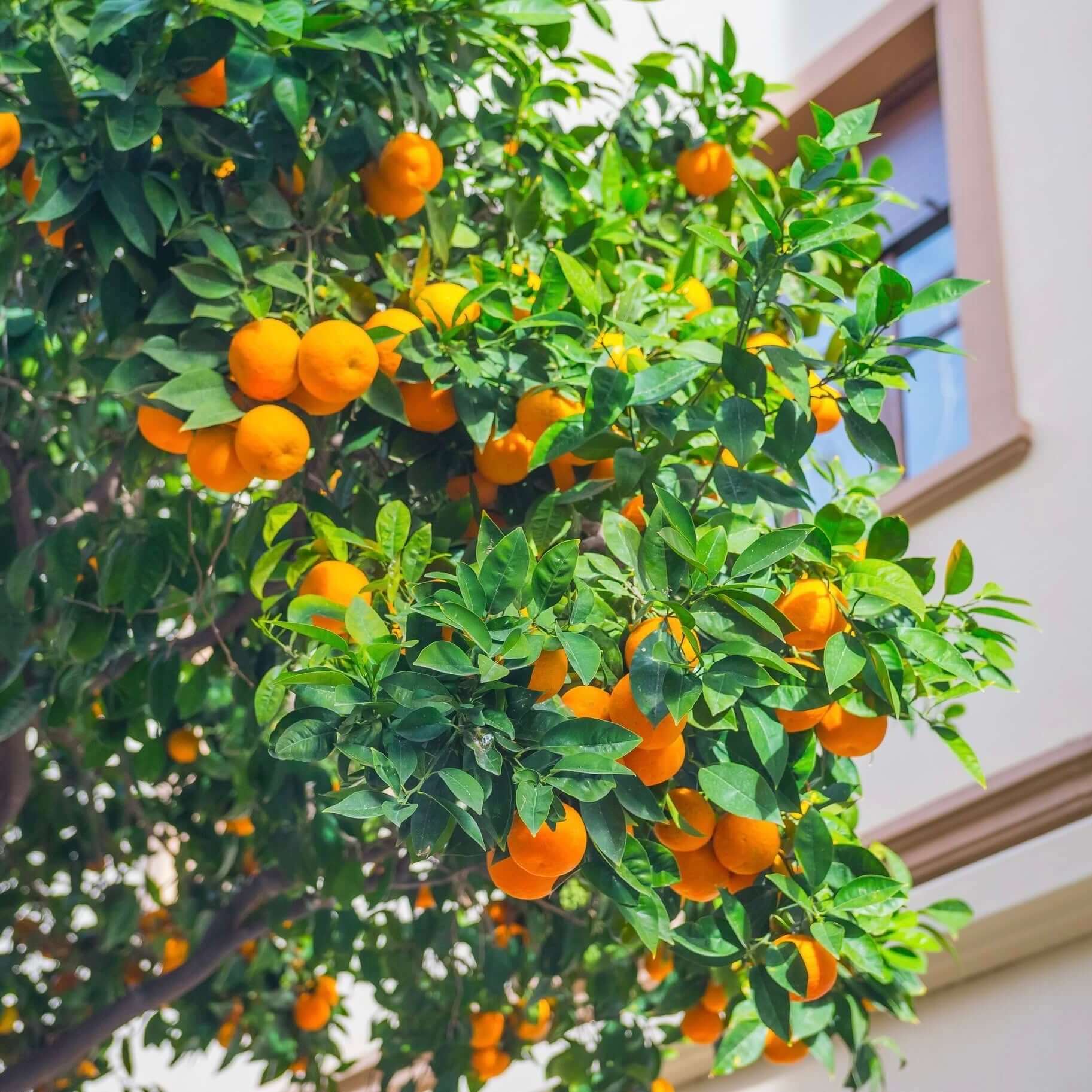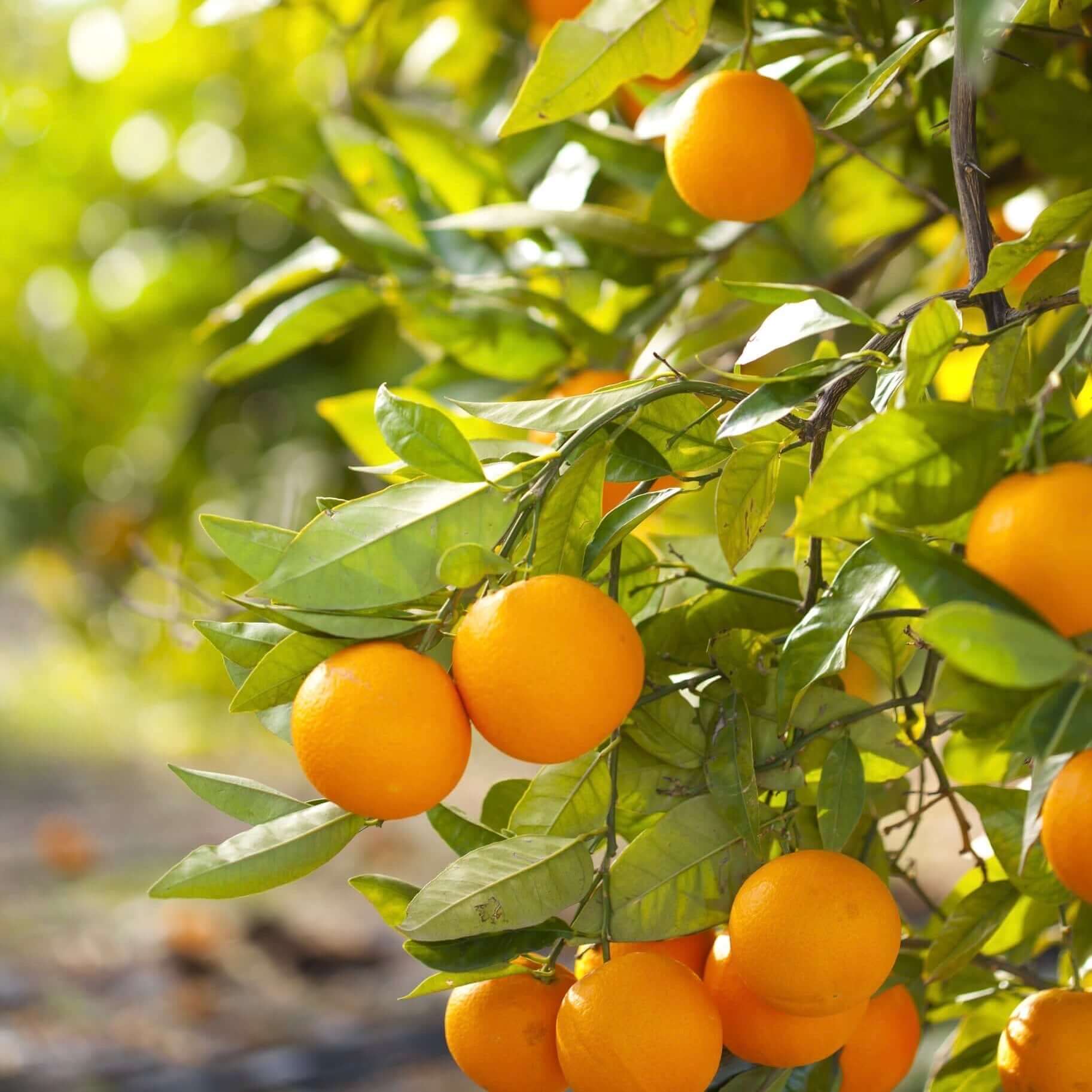
Valencia Orange Tree
Citrus sinensis 'Valencia'
Delivery
24-hour money-back guarantee
Free delivery on orders over $349
Big Project? Call 888-444-1126 for bulk rates!
Valencia Orange Tree is the best variety for orange juice. The medium-large fruit has a high juice content and is very sweet, but slightly more acidic than the Washington Navel Orange Tree. The nearly seedless fruit holds well on the plant. The vigorous, attractive tree performs well in all citrus climates. Self-fertile. Needs heat to sweeten fruit. Harvest in Summer. Protect from cold temperatures below 28F.
The mature height and fruit production of your citrus tree will depend on several environmental factors such as climate, light, soil type, texture, fertility and moisture, and pruning practices. Your citrus tree can easily be maintained at a smaller size with annual pruning.
How tall does a Valencia Orange Tree grow?
Are your Valencia Orange Trees grafted?
When does the Valencia Orange Tree produce fruit?
Does the Valencia Orange Tree need another tree for pollination?
Orange, Citrus
10-15 ft.
6-8 ft.
Moderate
Perfect Your Landscape With Expert Help
Customize your yard with confidence. Schedule your free consultation today and bring your outdoor space to life!

